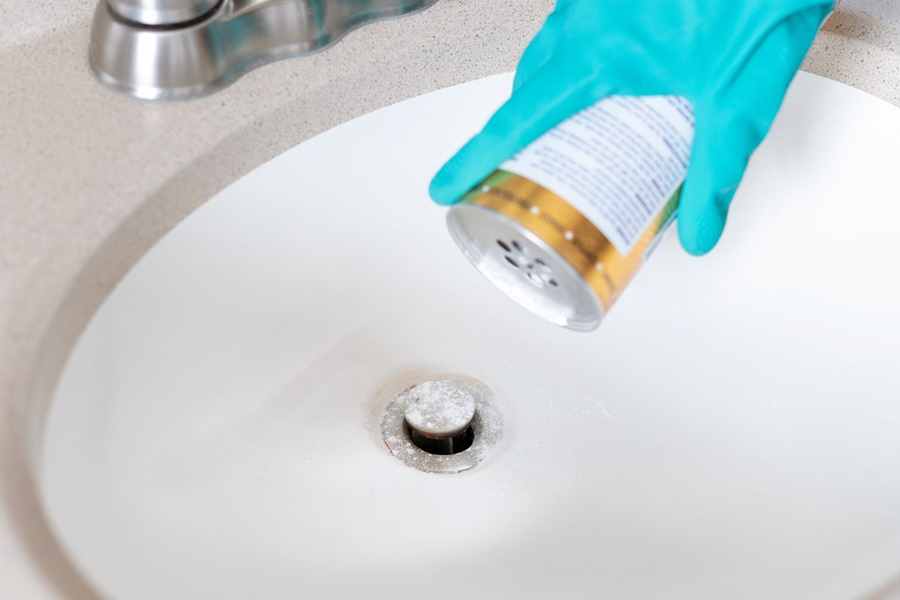Rust stains in a bathtub can be both unsightly and stubborn. Whether caused by hard water, old pipes, or metal objects left behind, these orange-brown blemishes require prompt action. In this guide, we will cover how to remove rust stains from a bathtub effectively using proven methods, from natural remedies to industrial-grade cleaners. By the end of this guide, your tub can look sparkling clean and rust-free.
What Causes Rust Stains in a Bathtub?
Rust stains typically form when iron-rich water or metal fixtures oxidize and leave residue. Common causes include:
Hard water with high iron content
Leaky faucets or plumbing with corroded pipes
Metal cans or razors left on wet surfaces
Old fixtures with rusted bases
Understanding the source is key to preventing future buildup after cleaning.
Essential Tools and Supplies for Rust Removal
Before starting, gather the following cleaning supplies:
Rubber gloves
Protective eyewear
Baking soda
White vinegar
Lemon juice
Salt
Pumice stone
Cream of tartar
Hydrogen peroxide
Commercial rust remover (e.g., CLR, Bar Keepers Friend, Iron OUT)
Scrub brush or sponge
These materials will allow you to tackle both light stains and deep rust marks.
How to Remove Rust Stains Using Natural Cleaners
1. Baking Soda and Vinegar Paste
Ingredients:
½ cup baking soda
White vinegar (enough to form paste)
Instructions:
1. Mix baking soda with vinegar until a thick paste forms.
2. Apply paste directly to the rust-stained area.
3. Let sit for 30–60 minutes.
4. Scrub gently with a non-abrasive sponge.
5. Rinse thoroughly with warm water.
This method works best for fresh or surface-level rust stains and is safe for porcelain and enamel tubs.
2. Lemon Juice and Salt Scrub
Ingredients:
½ lemon
2 tablespoons table salt
Instructions:
1. Sprinkle salt over the rust stains.
2. Squeeze fresh lemon juice directly on the salted area.
3. Let the mixture sit for 1–2 hours.
4. Scrub the surface using a brush or sponge.
5. Rinse thoroughly.
The acidity in lemon juice naturally breaks down iron oxide, making this an excellent eco-friendly solution.
3. Hydrogen Peroxide and Cream of Tartar
Ingredients:
1 tablespoon hydrogen peroxide
2 tablespoons cream of tartar
Instructions:
1. Create a paste by mixing hydrogen peroxide with cream of tartar.
2. Apply the paste to the affected area.
3. Let it sit for at least 30 minutes.
4. Scrub the area gently and rinse.
This combination works well on fiberglass bathtubs and leaves a pleasant finish.
Using Commercial Rust Removers for Tough Stains
If natural solutions don’t completely remove the rust, industrial-grade rust removers are effective alternatives.
1. CLR (Calcium, Lime & Rust Remover)
Apply directly to the stained area.
Wait 2–5 minutes.
Scrub with a brush and rinse thoroughly.
Note: Always use gloves and ensure proper ventilation when working with CLR.
2. Bar Keepers Friend
Sprinkle powder over the stain.
Add water to form a paste.
Let sit for 5–10 minutes.
Scrub with a damp sponge and rinse.
This cleaner is non-abrasive yet powerful, suitable for porcelain, ceramic, and fiberglass surfaces.
3. Iron OUT Rust Stain Remover
Spray directly on the rust.
Allow 10 minutes of dwell time.
Scrub and rinse with water.
Iron OUT is a professional-grade cleaner that breaks down rust at the molecular level.
Preventing Rust Stains in the Bathtub
1. Install a Water Softener
A water softener removes excess minerals like iron and calcium, reducing the chance of rust forming due to hard water.
2. Repair Leaky Faucets
Leaky faucets contribute to standing water, which accelerates rust formation. Fix leaks promptly and dry the area regularly.
3. Avoid Storing Metal Items in the Bathtub
Razor blades, shaving cream cans, and other metal items can cause rust when left in contact with wet surfaces. Use plastic storage trays or hang items above the water line.
4. Regular Cleaning Routine
Clean your bathtub weekly using non-abrasive cleaners to avoid build-up of iron or other minerals. Consistent care is the best prevention method.
How to Remove Rust from Specific Bathtub Types
1. Porcelain Tubs
Use baking soda and vinegar or Bar Keepers Friend. Avoid metal brushes to protect the delicate enamel.
2. Fiberglass Tubs
Stick to gentle natural solutions like lemon and salt or peroxide-based pastes. Avoid anything abrasive that can scratch the surface.
3. Acrylic Bathtubs
Mild commercial products like Iron OUT and soft cloths are ideal. Never use steel wool or heavy-duty brushes.
4. Cast Iron Bathtubs
Use CLR or Bar Keepers Friend for effective cleaning. These tubs are more durable, but enamel still needs protection from scratching.
When to Call a Professional
If the rust is too severe or has penetrated into the coating or enamel, professional refinishing may be required. Contact a bathtub refinishing service if:
The rust keeps reappearing.
There’s flaking or chipping around the stained area.
DIY methods don’t work after repeated attempts.
Final Tips for Bathtub Maintenance
Wipe down the tub after every use.
Use a squeegee to remove residual water.
Clean metal fixtures monthly to prevent corrosion.
Ensure your bathroom is well-ventilated to reduce moisture buildup.
Conclusion
Removing rust stains from a bathtub requires diligence, the right tools, and proven techniques. Whether you prefer natural remedies or powerful commercial cleaners, consistency and care will help keep your bathtub looking pristine for years to come.

